How to "open" the chip and what's inside?
 Microcircuits are the closest to being called a “black box” - they are really black and their insides are a mystery to many.
Microcircuits are the closest to being called a “black box” - they are really black and their insides are a mystery to many.We will lift this veil of secrecy today, and sulfuric and nitric acid will help us in this.
Attention! Any operations with concentrated (and especially boiling) acids are extremely dangerous, and you can only work with them using appropriate protective equipment (gloves, glasses, apron, hood). Remember, we have only 2 eyes, and one drop is enough for everyone: because all that is written here is not worth repeating.
')
Open up
Take the chips of interest to us, add concentrated sulfuric acid. Bring to a boil (~ 300 degrees), do not stir :-) Soda is poured at the bottom - to neutralize spilled acid and its vapors.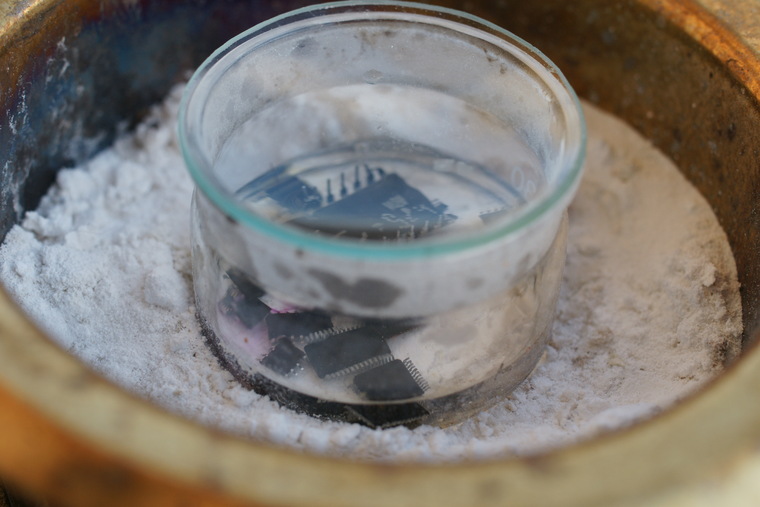
After 30-40 minutes from the plastic remains carbon:
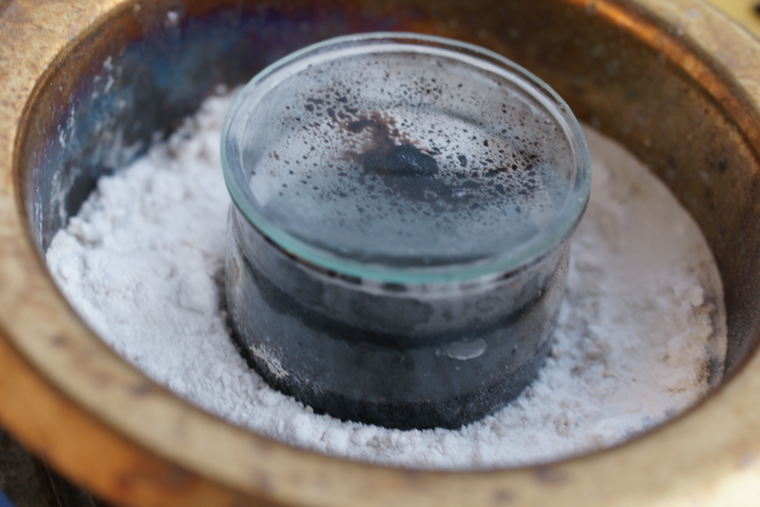
We take out and choose what will go to another life-giving acid bath, and what is ready:

If pieces of carbon are tightly stuck to the crystal, they can be removed with boiling concentrated nitric acid (but the temperature is already much lower, ~ 110-120C). Diluted acid will eat the metallization, therefore it is necessary to concentrate it:
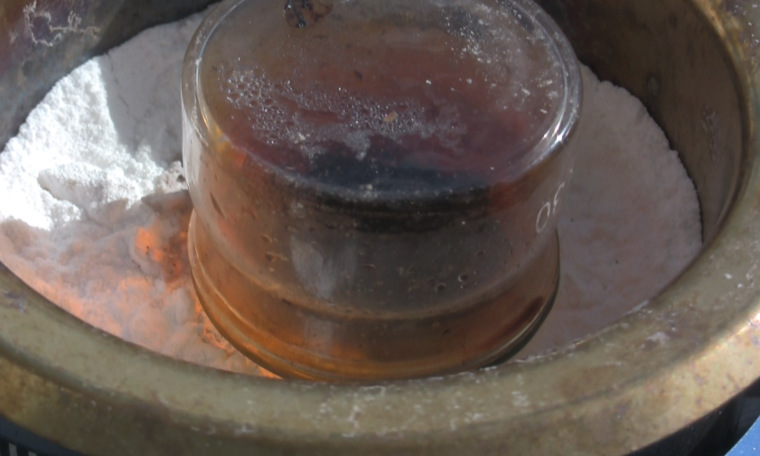
We look
Pictures are clickable (5-25MB JPEG). Some of the pictures of one of you could already see with me.The colors are traditionally “enhanced” to the maximum - in reality the riot of colors is much less.
PL2303HX - USB converter <> RS232, these are used in any Arduino and others like them:
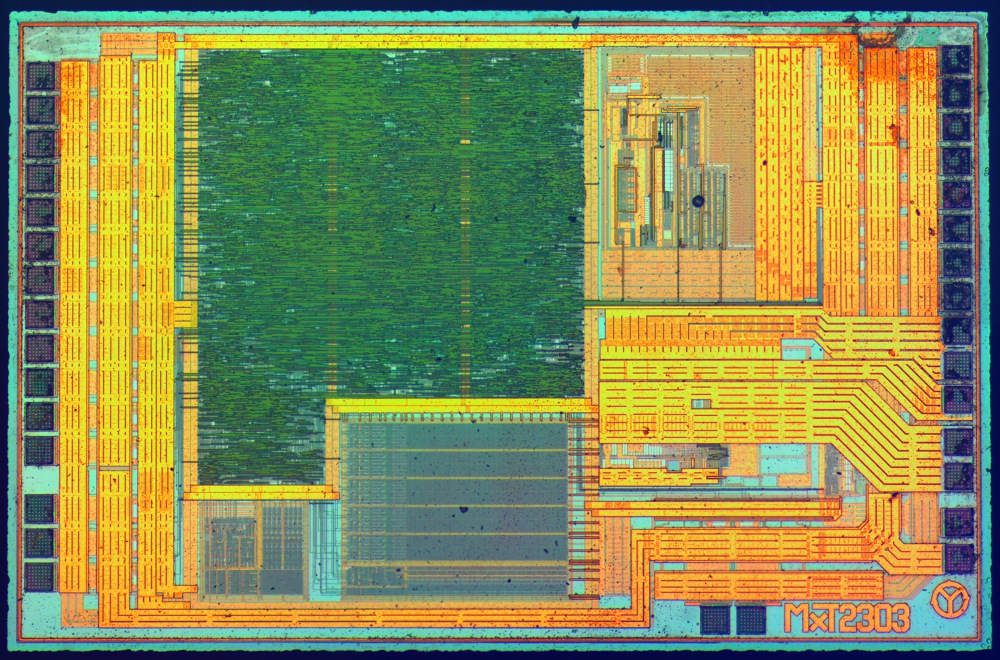
LM1117 - linear power regulator:
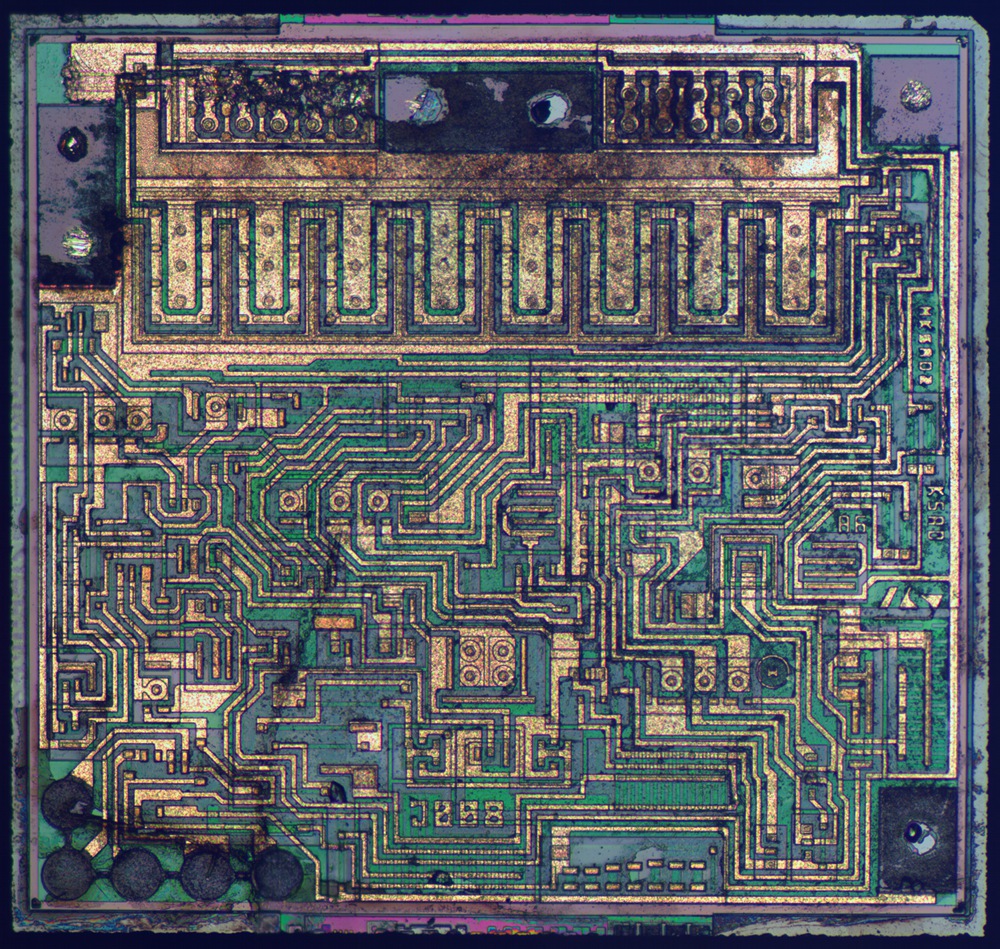
74HC595 - 8-bit shift register:

NXP 74AHC00
74AHC00 - 4 NAND (2I-NOT) elements. Looking at the gigantic size of the crystal (944x854 µm) - it becomes obvious that the "old" micron technologies are still used. Interesting is the abundance of “reserve” via to increase the yield of fit.
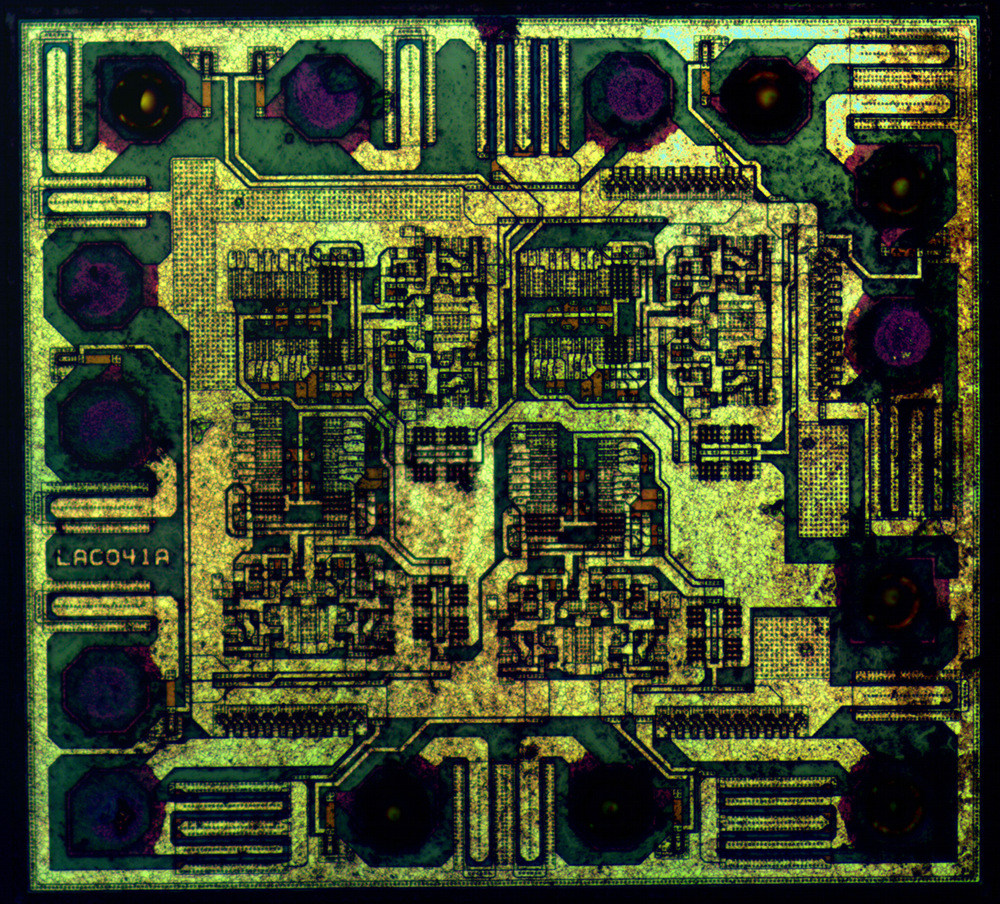
Micron MT4C1024 - a dynamic memory chip, 1 Mebibit (2 20 bits). It was used at the time of 286 and 386. The crystal size is 8662x3969µm.

AMD Palce16V8h
GAL (Generic array logic) chips are predecessors of FPGA and CPLD.
AMD Palce16V8h is a 32x64 array of AND elements.
The crystal size is 2434x2079µm, technology is 1µm.
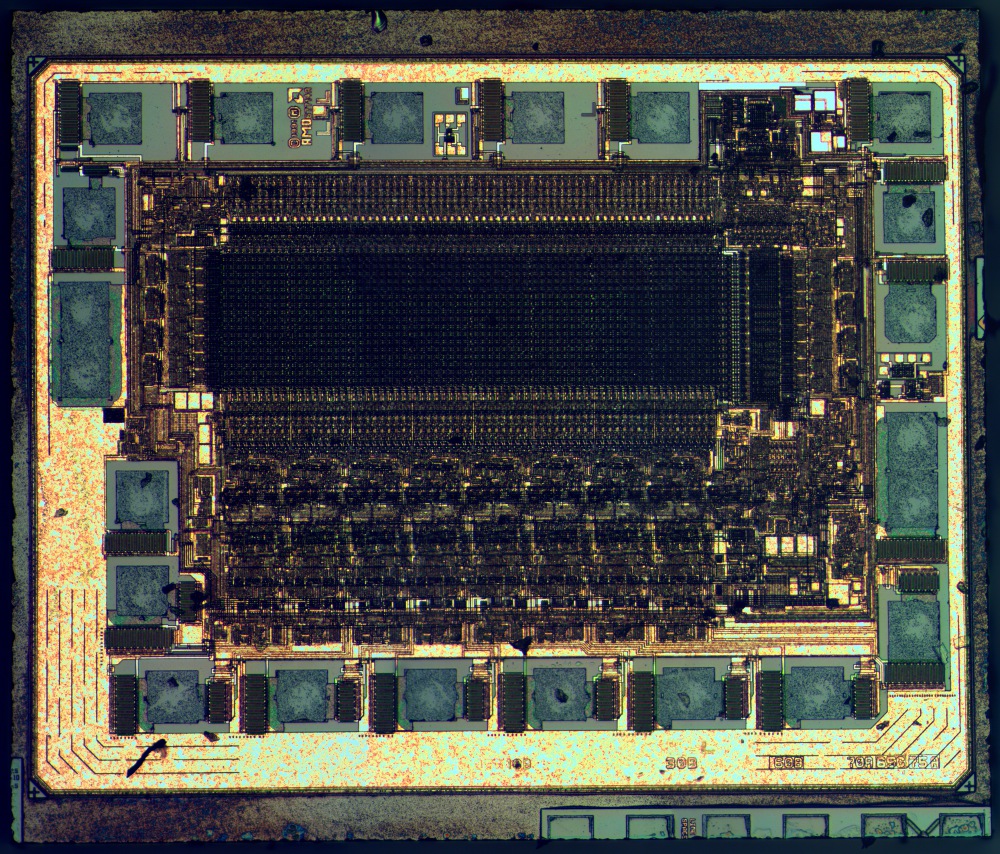
ATtiny13A is one of the smallest Atmel microcontrollers: 1kb of flash memory and 32 bytes of SRAM. The crystal size is 1620x1640 µm. Technological standards - 500nm.
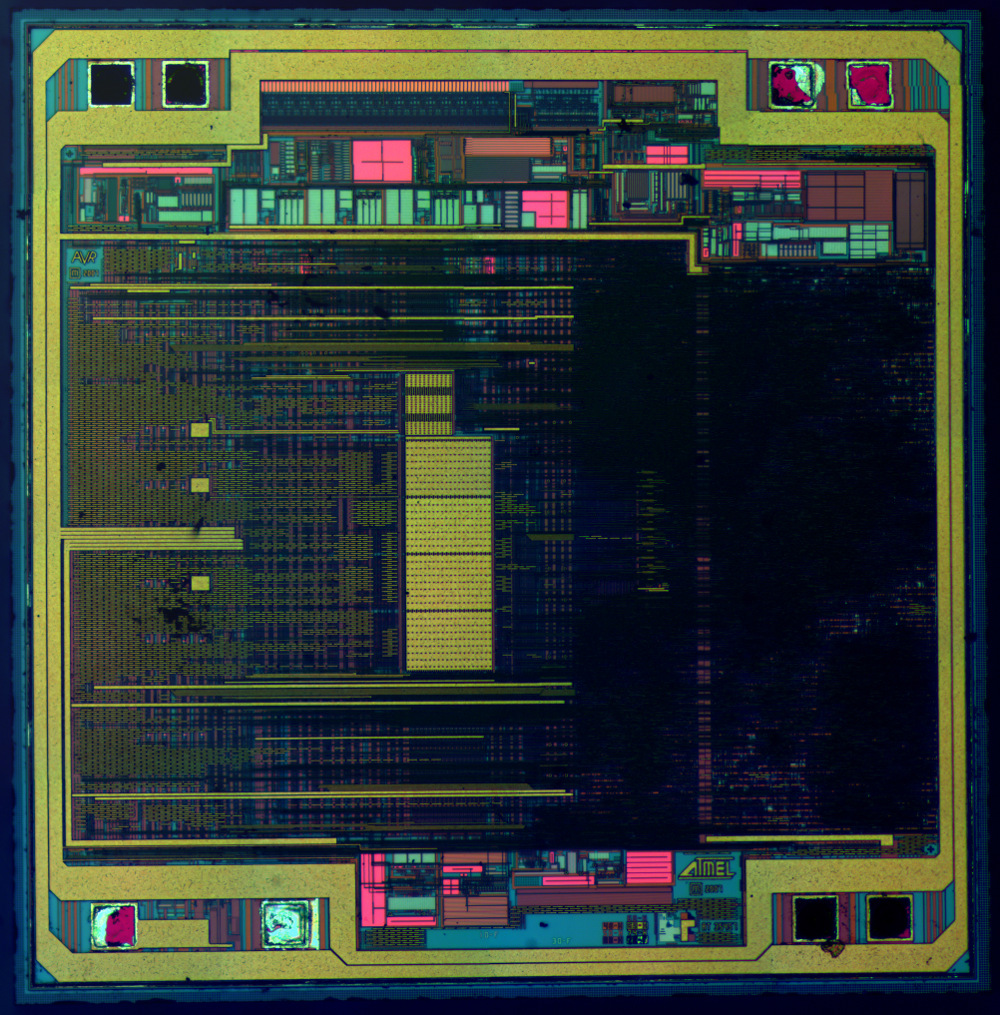
ATmega8 is one of the most popular 8-bit microcontrollers.
The crystal size is 2855x2795µm, technological standards 500nm.

The KR580IK80A (later renamed the KR580BM80A) is one of the most popular Soviet processors.
It turned out that, contrary to popular belief, it is not a layered copy of the Intel 8080 / 8080A (some units are similar, but the layout and layout of the pads is significantly different).
The thinnest lines are 6µm.

The STM32F100C4T6B is the smallest microcontroller on the ARM Cortex-M3 core from STMicroelectronics. The crystal size is 2854x3123µm.
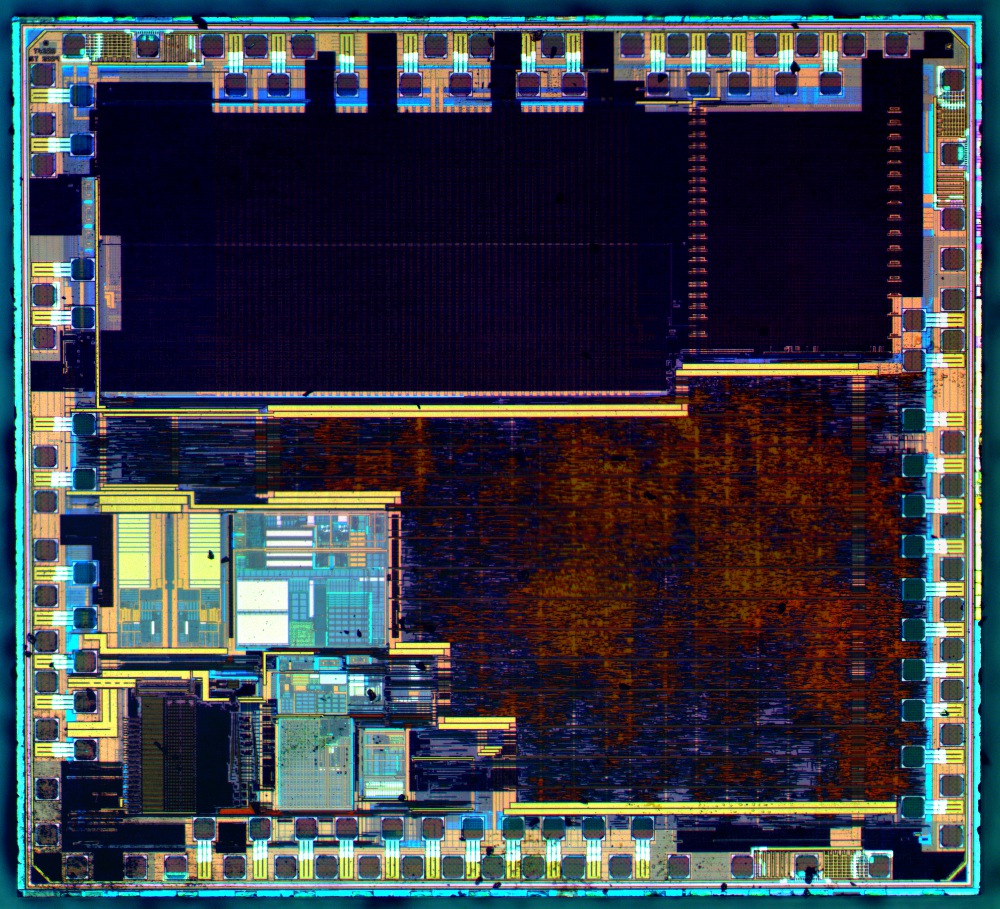
Altera EPM7032 - CPLD has seen a lot, and is one of the few who worked on 5V power. The crystal size is 3446x2252µm, technological norms are 1µm.
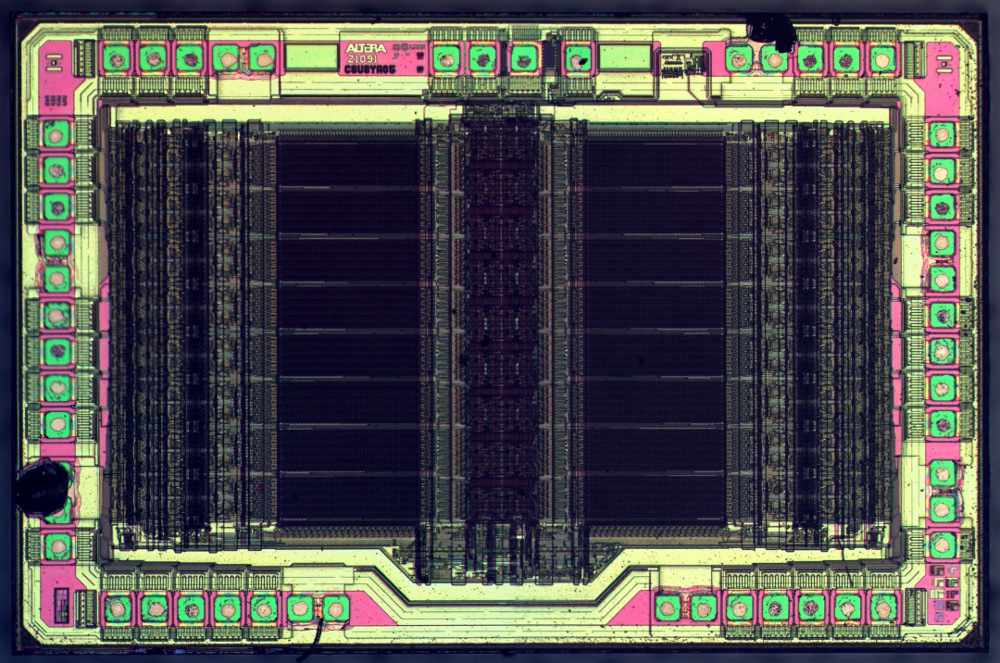
The black box is now open :-)
Ps. If you have chips of historical significance (for example, T34BM1, Soviet 286, foreign chips that are old and unique for their time), send us a look at what they have inside.
Photos are distributed under the Creative Commons Attribution 3.0 Unported license.
Source: https://habr.com/ru/post/157917/
All Articles